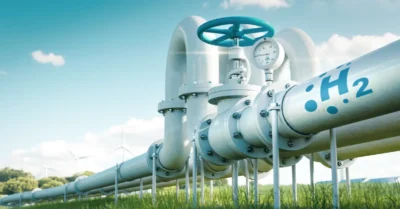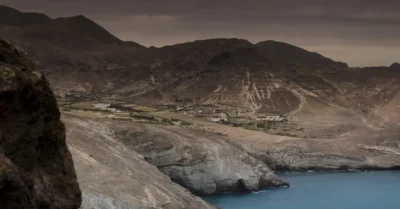Introduction
Germany advocates establishing a hydrogen pipeline with Morocco to support green steel production.
The Benefits of Germany’s Hydrogen Pipeline with Morocco for Green Steel Production
Germany is taking a significant step towards reducing carbon emissions by pushing for a hydrogen pipeline with Morocco. This pipeline would be used specifically for green steel production, a notorious sector for its high carbon footprint. By partnering with Morocco, Germany aims to tap into the country’s abundant renewable energy resources, particularly solar power, to produce green hydrogen. This collaboration can potentially revolutionize the steel industry and pave the way for a more sustainable future.
One of the key benefits of this hydrogen pipeline is the reduction in carbon emissions. Green steel production relies on hydrogen as a clean alternative to coal and coke, which are traditionally used in steelmaking. Using green hydrogen, the carbon emissions associated with steel production can be significantly reduced if not eliminated. This is crucial to achieving Germany’s ambitious climate targets and combating climate change globally.
Furthermore, the partnership with Morocco allows Germany to tap into the country’s vast renewable energy potential. Morocco is known for its abundant solar resources, making it an ideal location for producing green hydrogen. Germany can ensure a constant and sustainable supply of clean energy for its steel industry by harnessing this solar power and converting it into hydrogen. This reduces Germany’s reliance on fossil fuels and strengthens its energy security by diversifying its energy sources.
In addition to the environmental benefits, the hydrogen pipeline with Morocco also presents economic opportunities for both countries. As one of the world’s largest steel producers, Germany stands to benefit from the cost savings associated with green steel production. While the initial investment in building the hydrogen pipeline may be significant, the long-term savings from reduced energy costs and carbon taxes can outweigh the initial expenses. This can make German steel more competitive globally and potentially attract more international buyers who prioritize sustainability.
This partnership offers Morocco a chance to boost its economy and create new job opportunities. The construction and operation of the hydrogen pipeline will require skilled labor, providing employment opportunities for the local workforce. Additionally, the export of green hydrogen to Germany can generate significant revenue for Morocco, further strengthening its position as a regional renewable energy leader.
The collaboration between Germany and Morocco also has the potential to inspire other countries to follow suit. As the world grapples with the urgent need to reduce carbon emissions, finding sustainable alternatives to high-emission industries like steel production is crucial. The success of the hydrogen pipeline project can serve as a model for other countries looking to transition to green steel production. By showcasing this approach’s economic and environmental benefits, Germany and Morocco can encourage other nations to invest in similar initiatives and accelerate the global shift towards a low-carbon economy.
In conclusion, Germany’s push for a hydrogen pipeline with Morocco for green steel production offers numerous benefits. From reducing carbon emissions and reliance on fossil fuels to creating economic opportunities and inspiring other countries, this collaboration can transform the steel industry and contribute to a more sustainable future. By harnessing Morocco’s renewable energy resources and leveraging green hydrogen, Germany is taking a significant step towards achieving its climate targets and leading the fight against climate change.
Germany’s Role in Advancing Sustainable Steel Production through Hydrogen Pipelines
Germany’s Role in Advancing Sustainable Steel Production through Hydrogen Pipelines
In recent years, there has been a growing global concern about the environmental impact of steel production. Steel is a vital material used in various industries, but its production is known to be a significant contributor to greenhouse gas emissions. As countries strive to reduce their carbon footprint and transition to a more sustainable future, finding alternative methods for steel production has become a top priority.
Germany, known for its commitment to renewable energy and sustainable practices, has been at the forefront of this movement. The country has been actively exploring hydrogen as a clean energy source for steel production. Hydrogen, when produced using renewable energy sources, has the potential to reduce carbon emissions associated with steel manufacturing significantly.
Recognizing the need for international collaboration to achieve this goal, Germany has worked closely with Morocco to establish a hydrogen pipeline. With its abundant renewable energy resources, Morocco is an ideal partner for Germany in this endeavor. The two countries have been in talks to develop a pipeline to transport hydrogen from Morocco to Germany, providing a sustainable energy source for steel production.
The proposed hydrogen pipeline would span over 3,800 kilometers, making it one of the longest pipelines in the world. The ambitious project, but Germany and Morocco are committed to making it a reality. The pipeline would benefit the steel industry and contribute to the overall decarbonization efforts of both countries.
One of the main advantages of using hydrogen for steel production is its ability to produce clean steel. Traditional steel production methods rely on coal and coke, which release large amounts of carbon dioxide into the atmosphere. By replacing these fossil fuels with hydrogen, the carbon emissions can be significantly reduced, if not eliminated.
However, the transition to hydrogen-based steel production is not without its challenges. One of the main obstacles is the lack of infrastructure to support the widespread use of hydrogen. This is where the proposed pipeline between Germany and Morocco comes into play. The pipeline would be a crucial link, enabling hydrogen transportation from Morocco’s renewable energy facilities to Germany’s steel plants.
Another challenge is the cost of producing hydrogen. Hydrogen production is expensive, mainly due to the high cost of renewable energy sources. However, as technology advances and economies of scale are achieved, hydrogen production costs are expected to decrease. The pipeline project would help drive down costs by creating a demand for hydrogen and encouraging further investment in renewable energy infrastructure.
Furthermore, the hydrogen pipeline would benefit Germany, Morocco, and other European countries. The pipeline could extend to other countries, creating a hydrogen supply network for steel production across the continent. This would further strengthen Europe’s position as a leader in sustainable steel production and contribute to the region’s efforts to achieve carbon neutrality.
In conclusion, Germany’s push for a hydrogen pipeline with Morocco is a significant step towards advancing sustainable steel production. By harnessing the power of hydrogen, Germany aims to reduce carbon emissions associated with steel manufacturing and pave the way for a greener future. The proposed pipeline would address the challenges of infrastructure and cost and create opportunities for international collaboration and the development of a hydrogen economy. With Germany’s commitment to renewable energy and Morocco’s abundant resources, this partnership has the potential to revolutionize the steel industry and contribute to global efforts in combating climate change.
Exploring the Potential of Germany-Morocco Hydrogen Pipeline for Green Steel Manufacturing
Germany is taking a significant step towards achieving its goal of reducing carbon emissions by exploring the potential of a hydrogen pipeline with Morocco for green steel production. This innovative project aims to leverage Morocco’s abundant renewable energy resources, particularly solar power, to produce green hydrogen that can be transported to Germany through a dedicated pipeline. The hydrogen would then be used as a clean energy source for steel manufacturing, a sector known for its high carbon footprint.
This ambitious project aims to tap into Morocco’s vast potential for solar energy generation. The North African country boasts an ideal climate for solar power, with long hours of sunshine and vast expanses of desert. By harnessing this renewable energy source, Morocco can produce green hydrogen through electrolysis, which involves splitting water molecules into hydrogen and oxygen using electricity.
The green hydrogen produced in Morocco would then be transported to Germany through a dedicated pipeline. This pipeline would serve as a crucial infrastructure for clean energy transportation, similar to how natural gas pipelines are used today. The advantage of using hydrogen as an energy carrier is that it can be produced from renewable sources and does not emit any greenhouse gases when used as a fuel.
The primary purpose of this hydrogen pipeline is to support the steel manufacturing industry in Germany. Steel production is a highly energy-intensive process that relies heavily on fossil fuels, particularly coal. Germany can significantly reduce its carbon emissions by replacing coal with green hydrogen and make its steel production more sustainable.
The potential benefits of this project are manifold. Firstly, it would help Germany achieve its climate targets by reducing its reliance on fossil fuels and transitioning to clean energy sources. This aligns with the country’s commitment to the Paris Agreement and its goal of becoming carbon-neutral by 2050.
Secondly, the project would create a new market for Morocco’s renewable energy resources. By exporting green hydrogen to Germany, Morocco can capitalize on its solar power potential and generate revenue from selling clean energy. This would boost Morocco’s economy and contribute to the country’s sustainable development goals.
Furthermore, the hydrogen pipeline would strengthen the economic ties between Germany and Morocco. The two countries have a long history of cooperation, particularly in the energy sector. This project would further deepen their partnership and open up new avenues for collaboration in renewable energy.
However, several challenges must be addressed for this project to become a reality. One of the main challenges is the cost of building the hydrogen pipeline. Constructing such infrastructure requires significant investment, and Germany and Morocco would need to secure funding for the project.
Additionally, the project would require a robust regulatory framework to ensure hydrogen’s safe and efficient transportation. This includes addressing issues like hydrogen purity, pipeline integrity, and safety protocols. Collaborative efforts between the two countries’ governments and relevant stakeholders would be crucial in overcoming these challenges.
In conclusion, exploring a hydrogen pipeline between Germany and Morocco for green steel production holds immense potential for both countries. It offers a sustainable solution to reduce carbon emissions in the steel manufacturing industry while leveraging Morocco’s abundant solar energy resources. However, the project’s success hinges on addressing the financial and regulatory challenges of building and operating a hydrogen pipeline. With the right support and collaboration, this innovative project could pave the way for a greener and more sustainable future for Germany and Morocco.












